Lead Statistics Overview
The Lead Statistics module provides a detailed overview of lead generation, conversion performance, and sales results. It helps evaluate the effectiveness of referral sources and measure the overall health of your sales pipeline.
Access path: Business Intelligence → Clients → Lead Statistics.
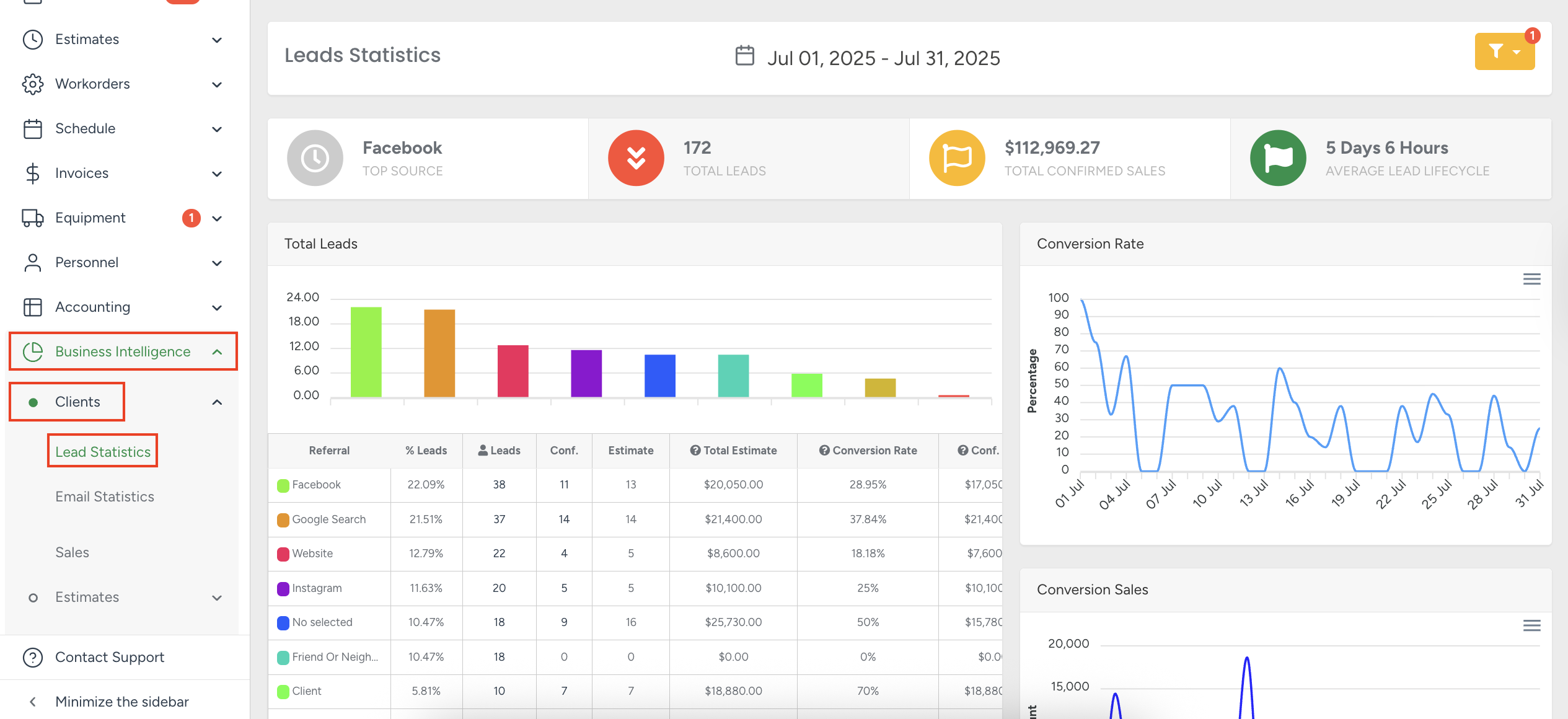
Date Selection
You can set a specific date range by clicking on the calendar icon.
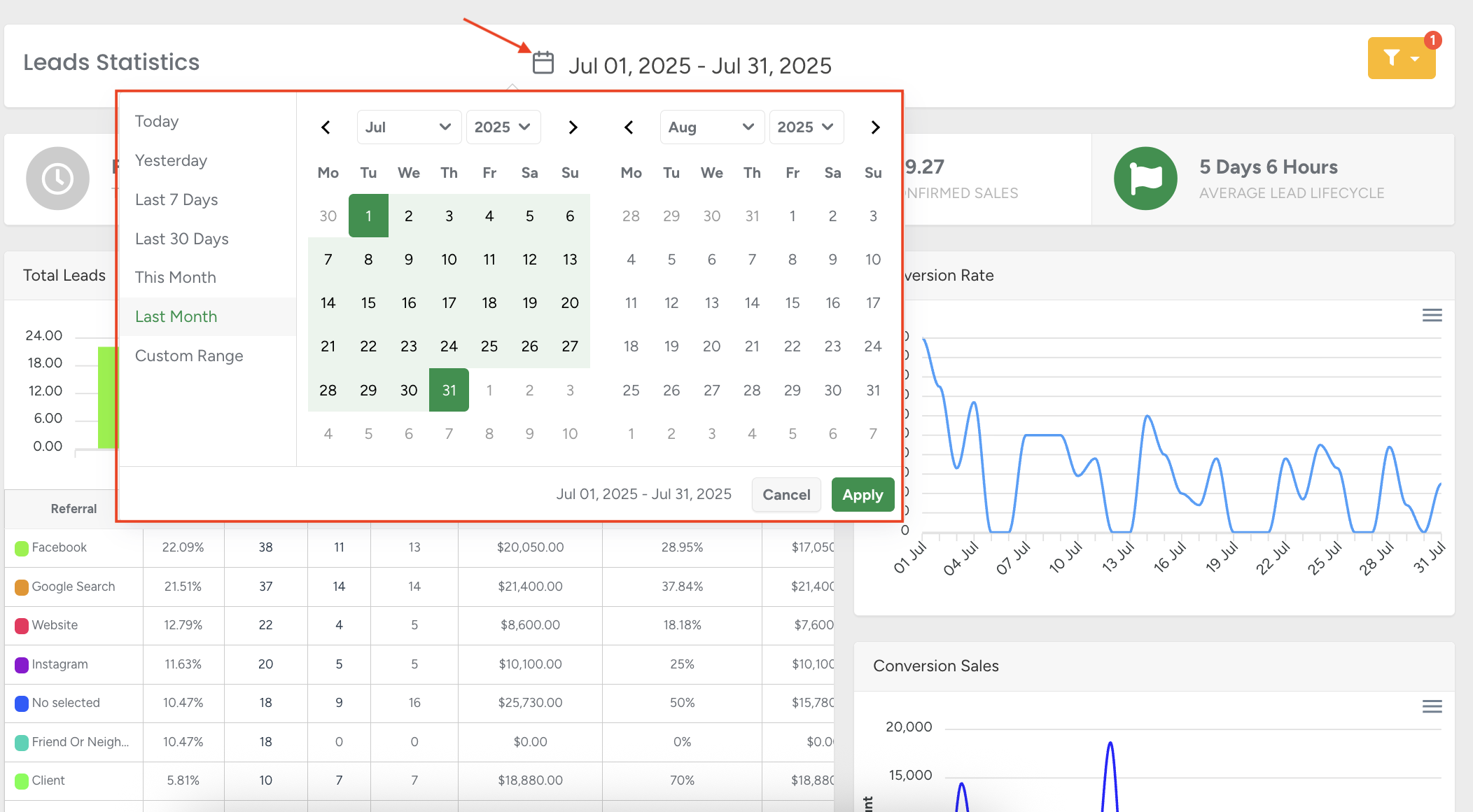
Filters
Results can be refined using the following filters:
Filter type — default: Referral; also available: UTM Source, Medium, Campaign, Term, Content
Client type — Residential, Commercial, Municipal
Estimator
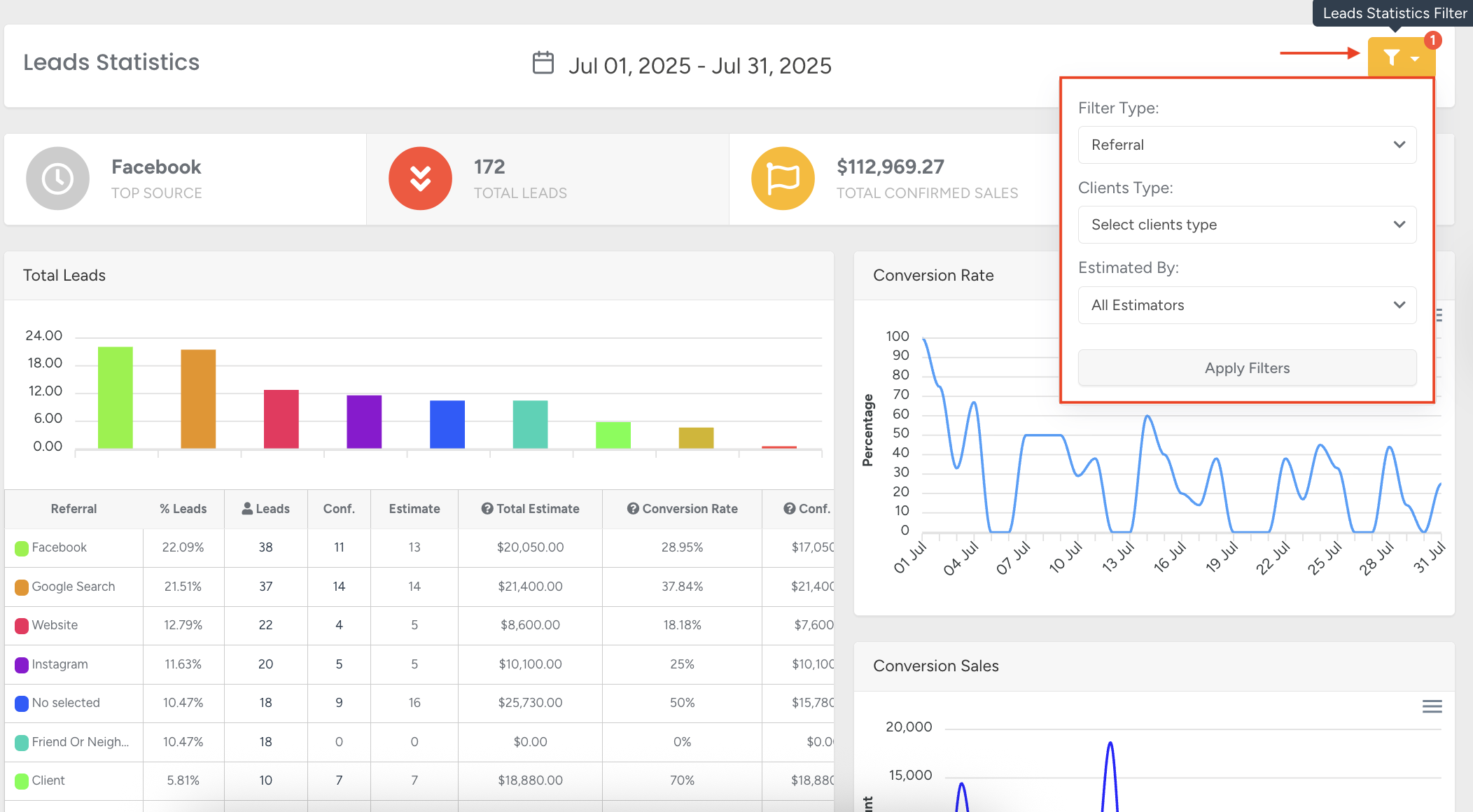
Dashboard Summary

The dashboard highlights four key metrics:
Top Source — identifies the main lead source for the selected period
Total Leads — number of leads acquired
Total Confirmed Sales — revenue generated from converted leads
Average Lead Lifecycle — time from lead creation to confirmed estimate(only business days)
Total Leads
On the left side of the screen, the Total Leads field displays lead generation and sales performance broken down by referral source.
This section helps to:
Identify the most effective referral channels
Evaluate their contribution to total leads
Make informed decisions about resource allocation and marketing efforts
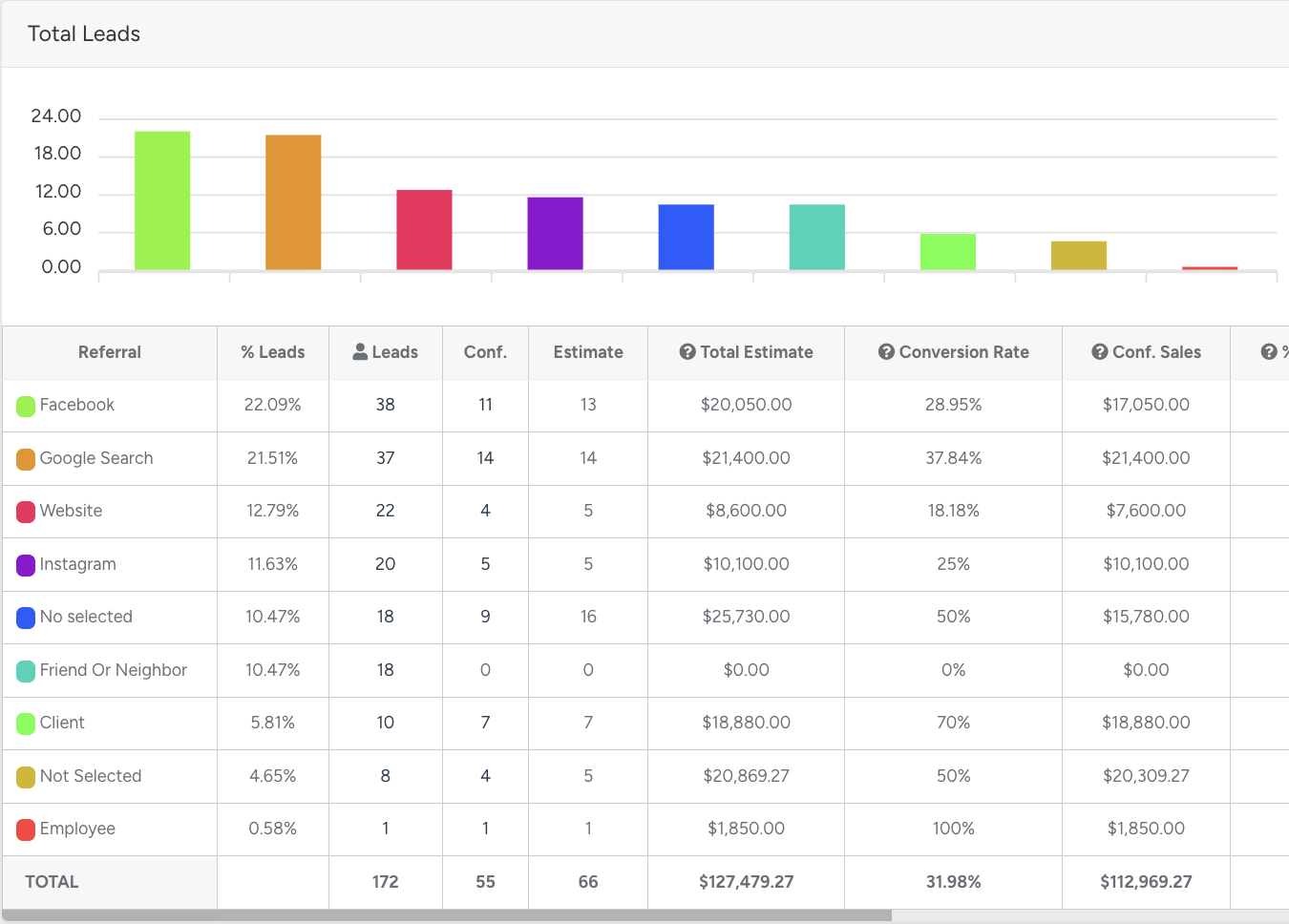
Lead Statistics — Key Metrics
% Leads — the top three referral sources are Facebook (22.09%), Google Search (21.51%), and Website (12.79%). These represent the most common sources selected when creating a lead at the client’s first contact.
👤 Leads — number of leads per source and total.
Click any number to view a list of client names.
Clicking a client name redirects to the client’s profile.
Conf. (Confirmed Estimates) — number of leads that converted into confirmed estimates.
Click any number to view the estimate number.
Clicking a number redirects to the specific estimate.
Estimate — number of estimates generated from the total leads.
Total Estimate — sum of all estimates in the selected currency.
Conversion Rate — ratio of confirmed estimates to total leads.
Conf. Sales — total value of confirmed sales.
Scroll horizontally to view additional columns.
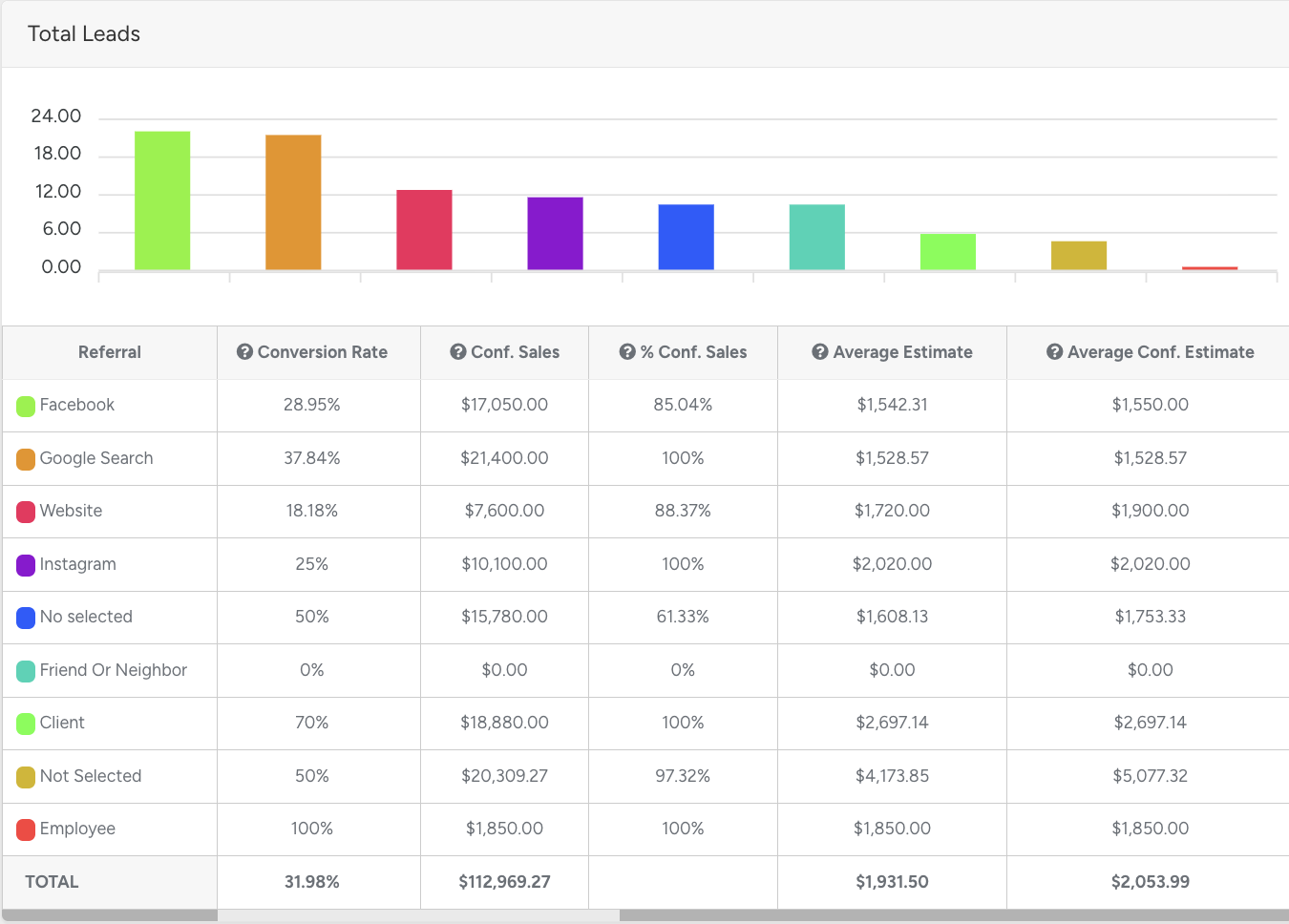
% Conf. Sales — ratio of confirmed sales to total estimate.
Average Estimate — average value of all estimates in the selected currency.
Average Conf. Estimate — average value of confirmed estimates in the selected currency.
Charts
On the right side of the screen, three charts provide visual insights into lead performance:
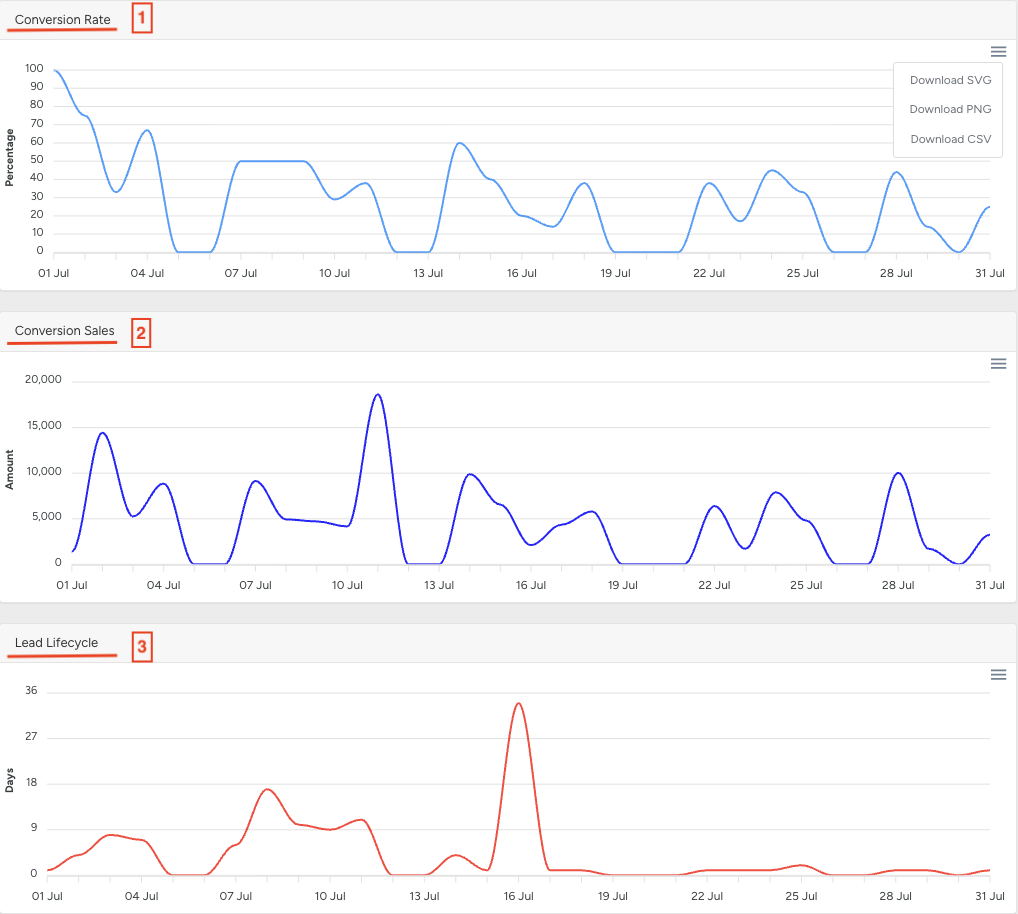
Conversion Rate — percentage of confirmed estimates vs. total leads over time.
Confirmed Sales — total revenue from converted leads over time.
Lead Lifecycle — average number of days from lead creation to confirmed estimate.
Hover over any point on a chart to view the exact date and value.

The three-line menu in the upper-right corner allows exporting charts in SVG, PNG, or CSV format.
Together, these charts provide a complete visual overview of lead performance, conversion efficiency, and sales pipeline speed.
Lead Status and Sales Distribution Dashboard
Under the Total Leads section on the left side of the screen, two pie chart dashboards are displayed:
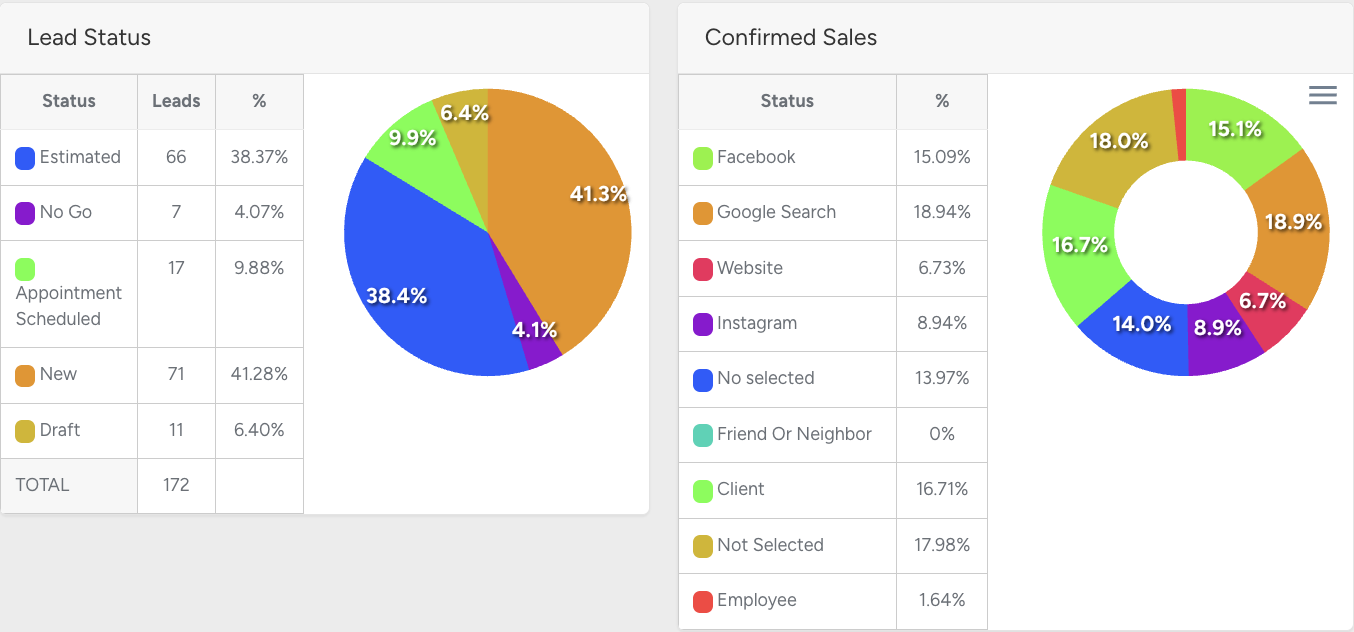
Lead Status — distribution of leads across different statuses (e.g., New, Estimated, Appointment Scheduled, Draft, No Go).
Confirmed Sales — percentage breakdown of confirmed sales by referral source (e.g., Facebook, Google Search, Website, Client). The three-line menu in the top-right corner allows downloading reports in SVG, PNG, or CSV formats.
Each segment is interactive: click to highlight a category.
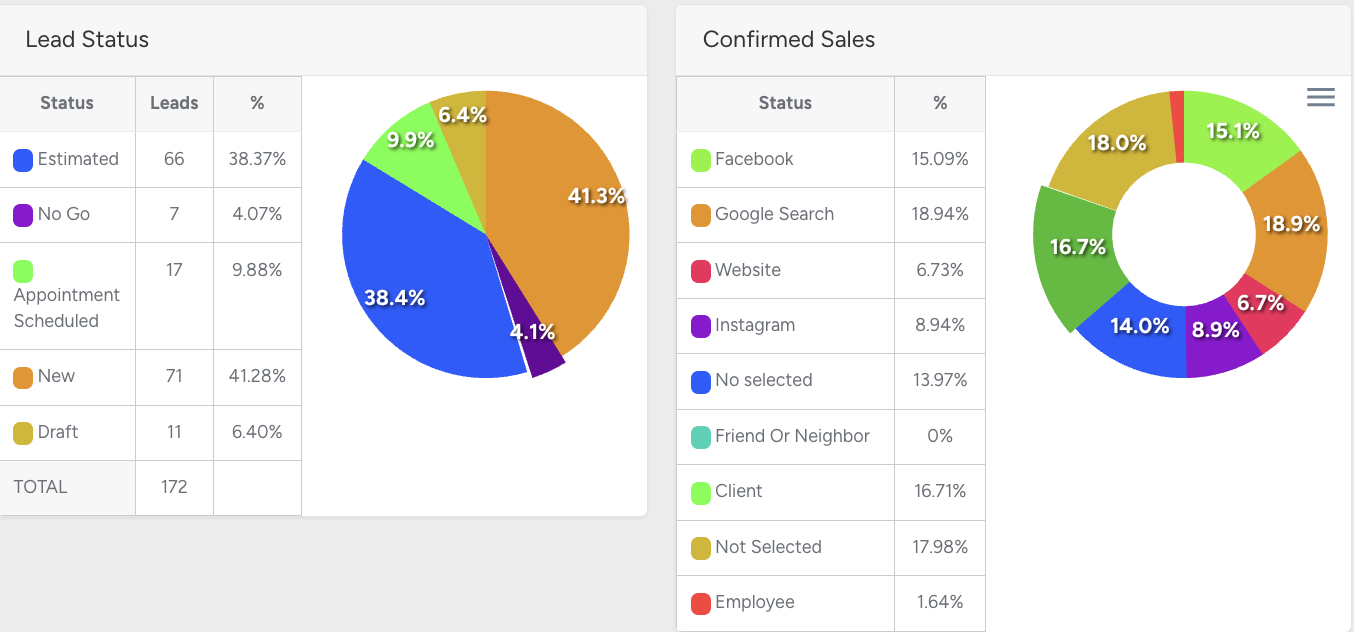
Lead Services
Below the pie charts on the left side of the screen, the Lead Services chart is displayed.
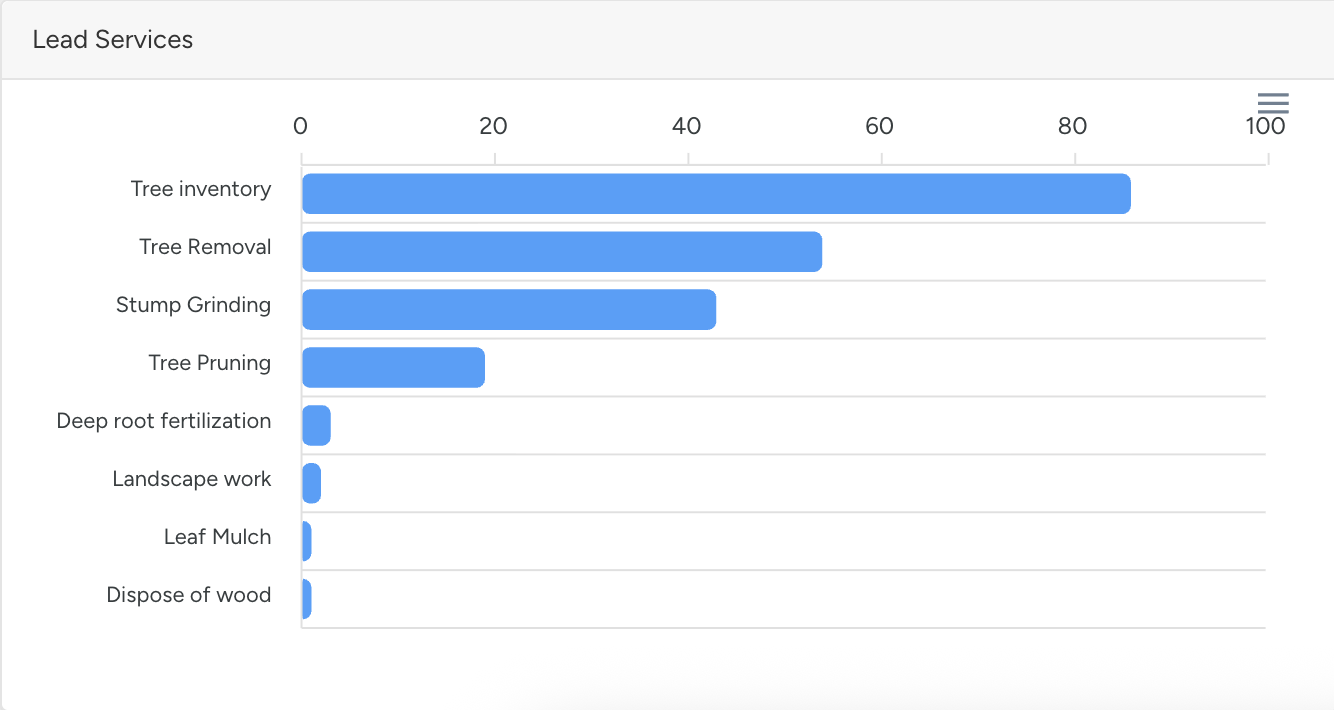
Vertical axis — list of services
Horizontal axis — quantity of leads per service
Hovering over a bar reveals the exact number of leads.
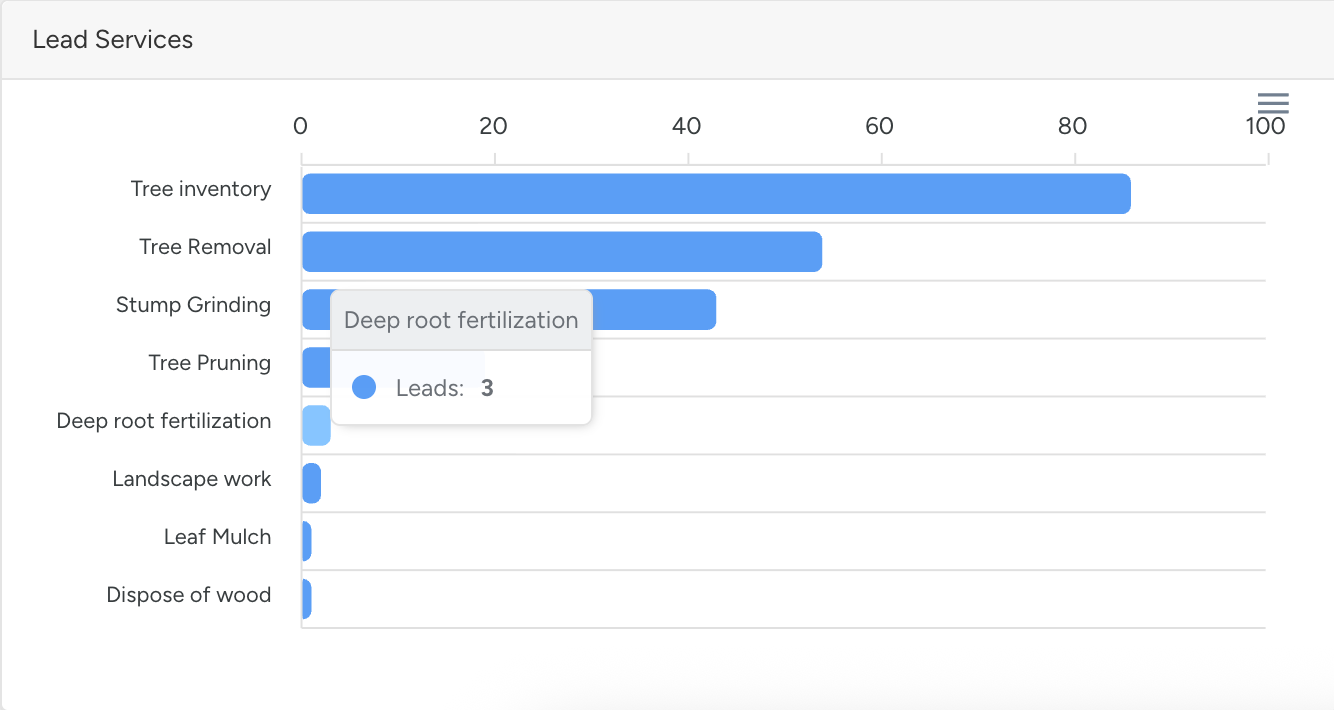
The three-line menu in the top-right corner allows exporting the chart in SVG, PNG, or CSV formats.
The Lead Statistics module provides a centralized, interactive, and visual way to track the entire lead journey — from initial referral source to confirmed sales. With its filters, detailed metrics, and downloadable reports, it empowers businesses to make data-driven marketing and sales decisions that improve efficiency and maximize revenue.
